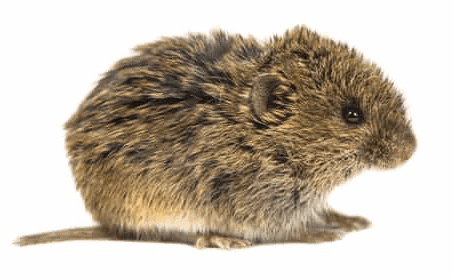6 Easy Facts About Guardian Pest Control Shown
6 Easy Facts About Guardian Pest Control Shown
Blog Article
The Only Guide for Guardian Pest Control
Table of ContentsThe Best Strategy To Use For Guardian Pest ControlThe Only Guide for Guardian Pest ControlThe Guardian Pest Control IdeasAn Unbiased View of Guardian Pest ControlThe Basic Principles Of Guardian Pest Control How Guardian Pest Control can Save You Time, Stress, and Money.
A targeted approach such as this maintains ecological influence reduced. Scouting and keeping track of for bugs ought to be done routinely, anywhere from daily to weekly depending on the sort of parasite and the environment. Create a route, and keep in mind the areas on the path to quit and examine under fallen leaves, along a structure, at bait stations.As an example, looking around a customer's yard for areas insects could lay eggs. Threshold-based decision-making connects to scouting and keeping track of. Noticing a couple of wasps every once in a while most likely doesn't necessitate activity. Seeing them every day and in raising numbers indicates it's time to locate and eliminate their nest. orem utah pest control.
You might utilize a catch plant such as zinnia to draw in Japanese beetles. Remaining current on parasite control techniques gives you an edge over your competition.
Some Known Questions About Guardian Pest Control.
Avoiding pest problems is simpler than getting rid of them, so tell consumers when securing a fracture or caulking a home window would certainly make a difference. Identify the pest and customize the control technique (orem pest control) - https://or3mp3stctrl.carrd.co/. Know exactly what kind of pest you're dealing with, and study the environment thoroughly as you develop a treatment plan
There are several general techniques to insect parasite monitoring. When establishing a general bug monitoring method it is practical to think about all of the available choices. A lot of particular insect control approaches can be identified into the following significant groups: social control, host resistance, physical control, mechanical control, biological control, and chemical control.
These approaches include modification of typical farming or horticulture practices to avoid bugs or to make the atmosphere much less positive for them. There are a number of types of social controls; the following are a couple of examples of commonly utilized techniques. A western corn rootworm, a pest that can be managed by crop turning.
See This Report about Guardian Pest Control
changes a plant that is vulnerable to a major pest with one more plant that is not susceptible, on a rotating basis. Corn rootworm larvae can be starved out by complying with corn with one to two years of a non-host crop such as soybeans, alfalfa, oats, or other plants.

Pickleworms will concentrate in squash planted near cucumbers, and the squash plants can be damaged. A meticulously read considered time of growing will certainly aid prevent some parasite problems such as seed corn maggot. Some apple varieties are immune to several pests. Picture by USDA-ARS Host resistance, or plant resistance, has been utilized successfully for years to decrease the influence of pests.
Guardian Pest Control for Beginners
Plant breeders try to utilize these qualities and even enhance them to establish plants that are resistant. Lots of ranges of important plants grown today, such as wheat, rice, alfalfa, corn, and apples are immune to one or even more pests. Historically, the development of immune selections was often laborious and prolonged, requiring several generations of plant hybridization.
Drifting row covers keep insects out These are methods that literally keep insect bugs from reaching their hosts - https://gravatar.com/thomassutton84059. Barriers include home window screens for maintaining wellness and problem insects out of buildings and plant insects out of greenhouses, floating row covers for lots of horticultural crops, and plant collars to keep cutworms from assaulting plants such as tomatoes
Codling moth larvae can be trapped under cardboard bands twisted around apple trees; the bands are gotten rid of and ruined. Some bugs, such as earwigs and slugs, can be enticed to their death in sunken catches loaded with beer. In some instances, chemical appeals (having pheromones or various other chemical attractants) are readily available to enhance trap effectiveness.
9 Easy Facts About Guardian Pest Control Explained

For example, plum curculio beetles can be eliminated from fruit trees by vigilantly banging tree arm or legs with a padded stick and collecting the grown-up weevils on a white sheet as they fall out of the trees. A solid spray of water will displace aphids and termites from greenhouse, yard, and home plants.
Guardian Pest Control Fundamentals Explained
Numerous centuries earlier, Chinese farmers observed that ants were helping to regulate insect parasites in their citrus orchards by feeding on caterpillars, beetles, and leaf-feeding pests. The farmers discovered that by accumulating the papery nests of a specific type of ant from trees in the countryside and relocating them right into their orchards, they obtained better control of some insects.
Killers might be pests or various other insectivorous pets, each of which consumes lots of insect target during its life time. Predators are commonly big, active, and/or noticeable in their actions, and are therefore quicker acknowledged than are parasites and virus. Parasites lay their eggs in or on their host. Picture by USDA-ARS.

Report this page